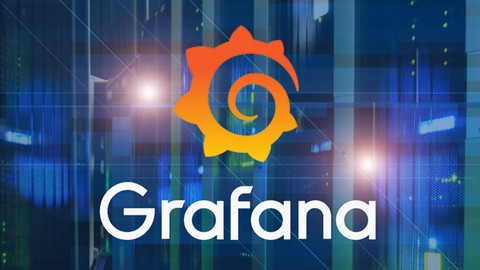Day 72 - Grafana🔥
 Pooja Bhavani
Pooja Bhavani

What is Grafana?
Grafana is an open-source, feature-rich, and highly customizable observability platform that allows users to visualize, analyze, and understand data from multiple sources. It provides comprehensive visualization options, making it a go-to tool for creating interactive and informative dashboards for monitoring various systems and applications.
What are the features of Grafana?
Grafana comes with a plethora of features, making it a versatile and user-friendly tool for observability:
Data Source Integration: Grafana supports integration with various data sources, including time-series databases like Prometheus, InfluxDB, Graphite, Elasticsearch, and many others.
Interactive Dashboards: With Grafana, users can create interactive dashboards by adding panels, charts, graphs, and tables to represent data effectively.
Alerting and Notifications: Grafana allows users to set up alert rules based on specified thresholds and send notifications via various channels like email, Slack, or other third-party integrations.
Data Exploration: Users can explore data with ad-hoc queries and apply filters to dive deeper into the collected metrics.
User Permissions: Grafana offers fine-grained access control and user permissions to ensure data security and privacy.
Plugins and Extensibility: Grafana's plugin architecture allows users to extend its functionality and add custom visualizations or data sources.
Why Grafana?
Grafana's popularity in the DevOps community stems from several factors:
Ease of Use: Grafana provides an intuitive and user-friendly interface, making it easy for both beginners and experienced users to work with.
Rich Visualization Options: Grafana offers a wide range of visualization options, empowering users to create stunning and meaningful dashboards.
Community Support: Grafana has a vibrant and active community that constantly contributes to its development and provides support through forums and documentation.
Integration with Various Data Sources: Grafana's ability to connect with numerous data sources makes it a versatile tool for monitoring various systems and applications.
What type of monitoring can be done via Grafana?
Grafana can be used for monitoring various aspects of IT infrastructure and applications, including:
System Metrics: Monitoring CPU usage, memory utilization, disk space, and network traffic of servers.
Application Performance: Visualizing response times, throughput, and error rates of applications.
Network Monitoring: Tracking network devices, bandwidth usage, and latency.
Database Performance: Monitoring query performance and database health.
What databases work with Grafana?
Grafana supports a wide range of databases, including:
Prometheus: Grafana integrates seamlessly with Prometheus for time-series data visualization and alerting.
InfluxDB: Suitable for storing and querying time-series data.
Graphite: A time-series database for monitoring and graphing numeric data.
Elasticsearch: Useful for visualizing log and event data.
What are metrics and visualizations in Grafana?
In Grafana, metrics are data points collected over time, often represented as time-series data. Visualizations are graphical representations of metrics, such as charts, graphs, and gauges.
With Grafana's vast array of visualization options, you can create line graphs, bar charts, heatmaps, tables, and more, allowing you to gain insights into your data quickly and efficiently.
What is the difference between Grafana vs Prometheus?
While Grafana and Prometheus are often used together, they serve different purposes:
Grafana is primarily used for data visualization and monitoring dashboard creation. It provides a flexible and interactive interface for visualizing metrics from various data sources.
Prometheus, on the other hand, is a time-series database and monitoring system. It collects and stores metrics and offers alerting capabilities. Grafana can be used as a frontend to query and visualize data stored in Prometheus.
In this article, you've learned about Grafana, its features, data visualization capabilities, and monitoring possibilities. Grafana's user-friendly interface, rich visualization options, and extensive community support make it a go-to tool for DevOps professionals.
Subscribe to my newsletter
Read articles from Pooja Bhavani directly inside your inbox. Subscribe to the newsletter, and don't miss out.
Written by
